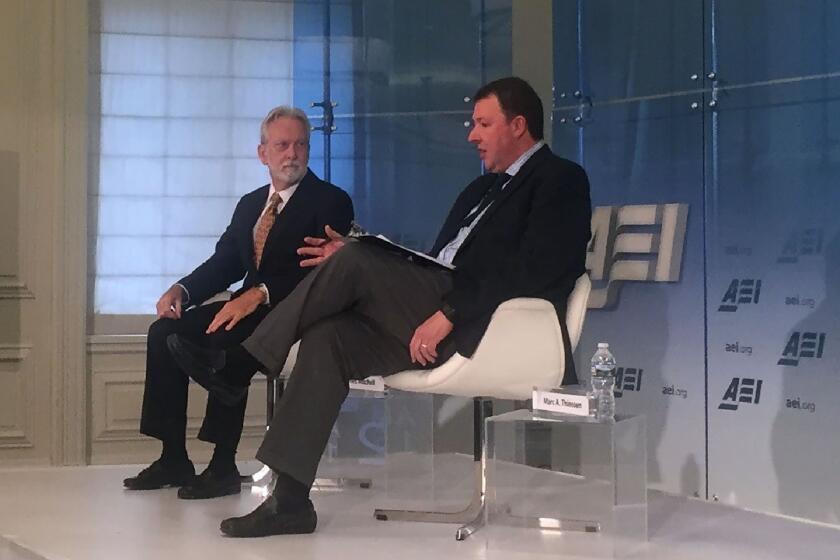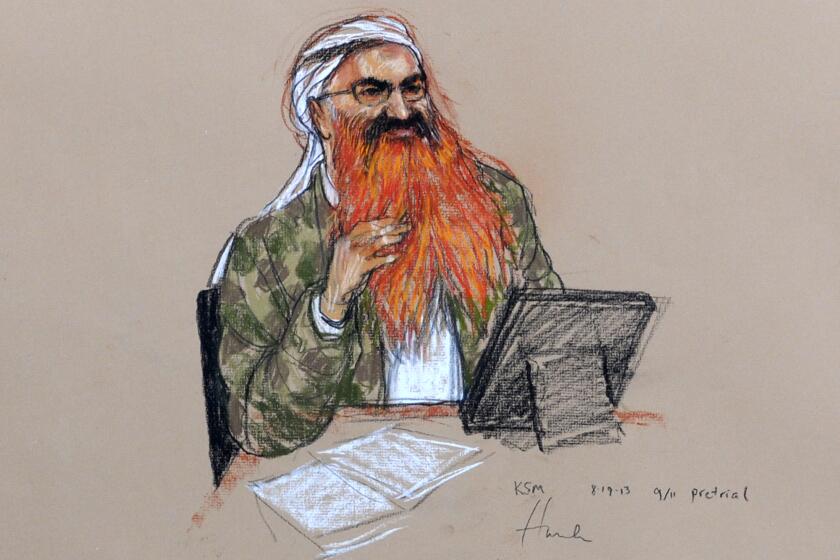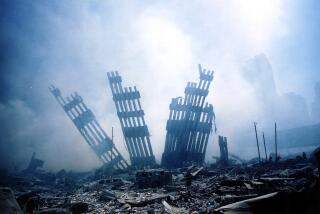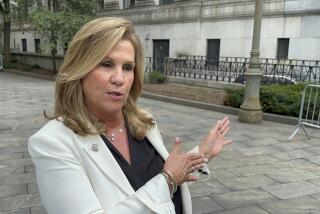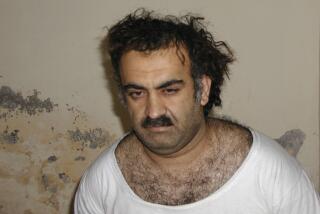I’ve spent 20 years on the trail of the 9/11 suspect known as KSM. Here’s what I’ve learned
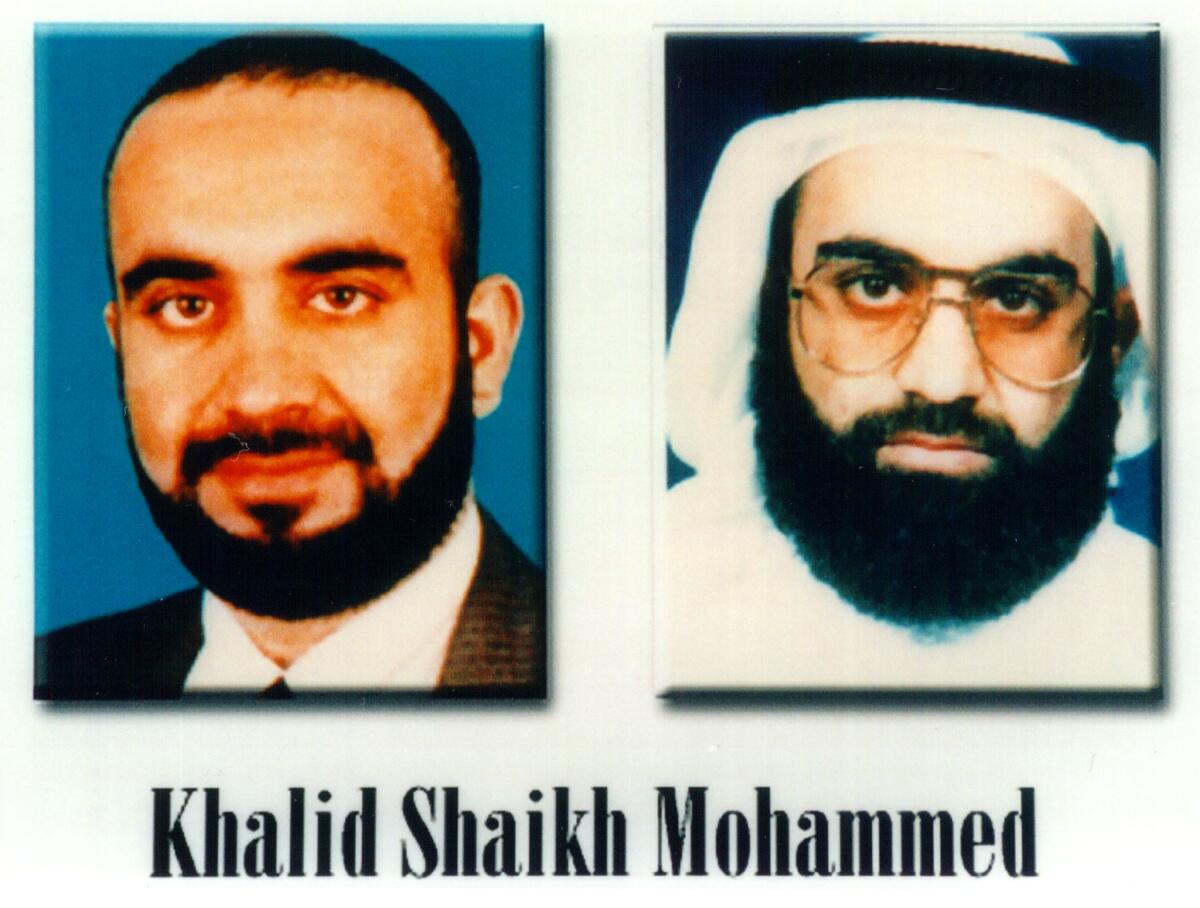
GUANTANAMO BAY NAVAL BASE, Cuba — I first saw Khalid Shaikh Mohammed 10 years ago here in a courtroom on a remote part of this remote Navy base. He was being arraigned on charges of conspiring to murder 2,977 people. I was struck by his almost comic appearance.
He had gone completely gray but for his startlingly dark eyebrows and his long bushy beard, now dyed bright orange. He wore a fancy hat. He looked more like a movie villain than the confessed mastermind of the Sept. 11, 2001, attacks against the United States.
By then, I had been chasing Mohammed’s trail for a decade. The arraignment was my first opportunity to match the flesh-and-blood man with the paper trail I had compiled.
Recently, I was back in the courtroom at Guantanamo, where pretrial hearings continue to move glacially. A trial still awaits somewhere beyond the horizon. The beard’s still orange.
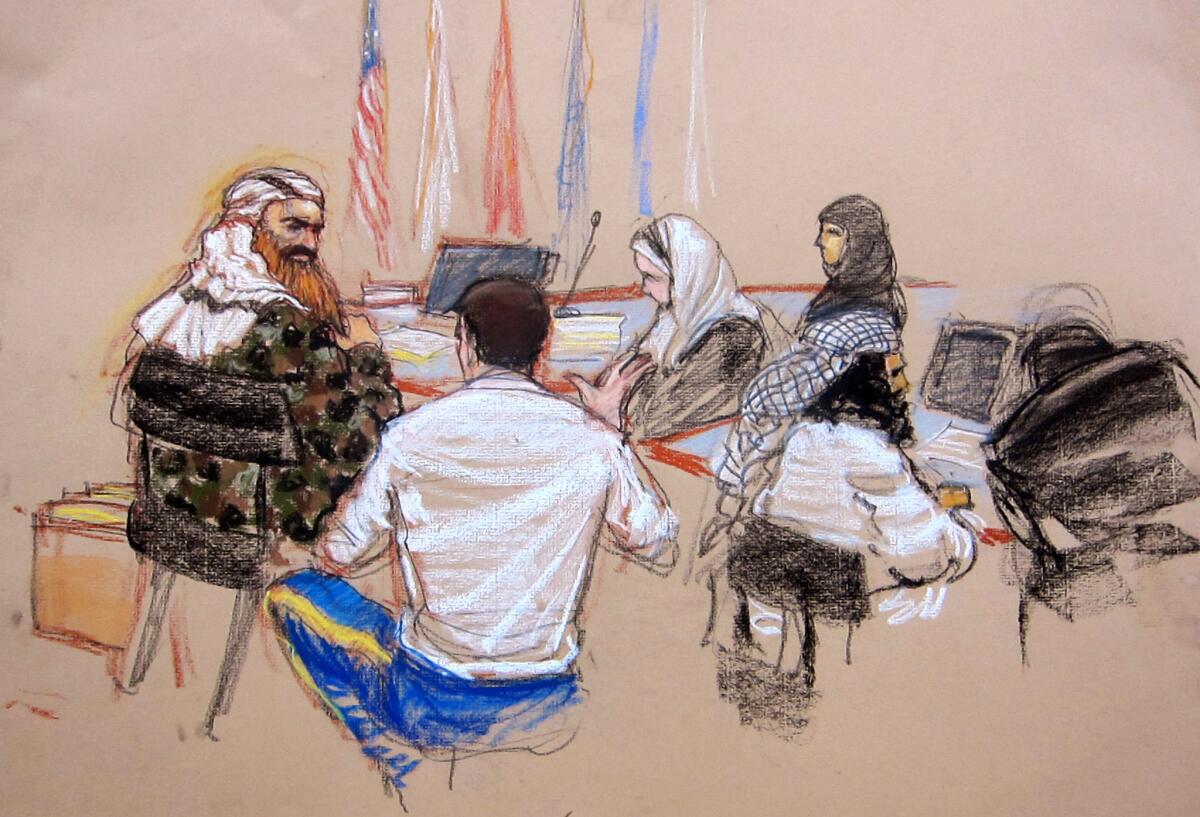
Why chase a man for two decades? I wish I could tell you. I’m obsessive, for one. I wanted to get the story, which is almost certainly vanity. More than that, however, I simply wanted to know.
To know who this guy was, and ultimately to know why men do such horrible things.
I first learned Mohammed’s name in the spring of 2002 while reporting for the Los Angeles Times in a remote provincial capital in the Philippines, not exactly the place I imagined I would cross tracks with the man who planned Sept. 11.
We had made the journey to Lingayen to talk to a cop named Boogie Mendoza. Boogie was obsessed with a terrorist plot from the mid-1990s, when he had been a lead investigator with the national police in Manila. The plot involved five men boarding as many as a dozen American jumbo jets scheduled to fly across the Pacific to the United States.
On board they would assemble tiny chemical bombs and attach them to Casio watches, which would be the timers. The men would deplane at the next stop and board another flight and repeat the bomb assembly. Two of the men were tasked with boarding a third flight and placing a third bomb.
All the timers were set so that the bombs would explode at roughly the same time, sending thousands of people, presumed because of their destinations to be mainly Americans, to their deaths.
The plan was stopped when a fire broke out in the kitchen of the plotters’ small Manila apartment. The lead plotter fled before the fire department and police responded. To their surprise, they found the apartment had been turned into a bomb factory.
They filled two police vans with bomb-making materials collected from the site. They also found a laptop, a chemical dictionary, two Bibles, two crucifixes and a manual on how to hear Roman Catholic confessions. The plotters were also making plans to assassinate the pope.
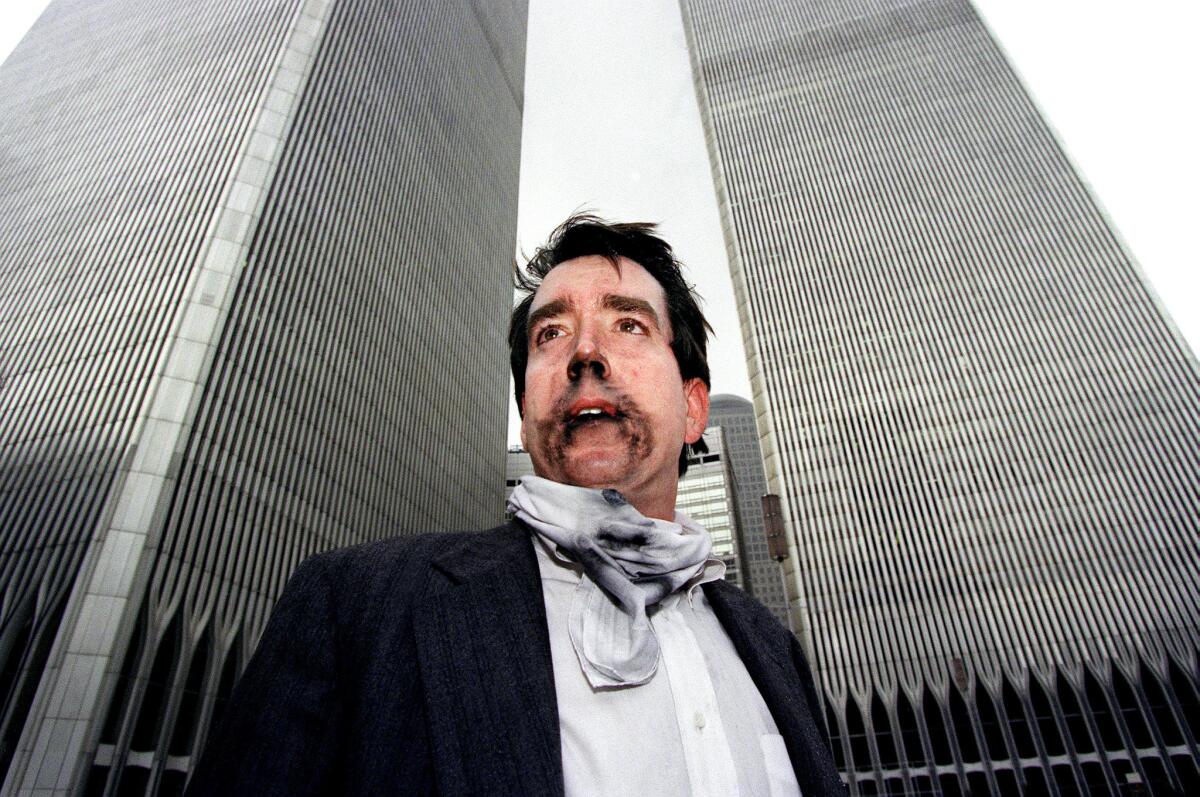
The man who appeared to have led this effort, known as Ramzi Yousef, was already being sought by American police for the 1993 bombing of the World Trade Center in New York. After a worldwide manhunt, he was eventually caught in Pakistan, seemingly putting an end to the affair. But Boogie was obsessed with the details of the airplane plot. He was so obsessed his bosses eventually got tired of hearing about it and exiled him to Lingayen, nestled on a bay in the South China Sea, about 100 miles north of Manila.
Boogie had taken his files with him and was happy to share them with me. A thunderstorm raged outside the neocolonial police headquarters when, after introductions, the investigator pulled several file boxes out of a closet, set them on a table and let me have at them.
By that time American investigators had learned that Yousef’s real name was Abdul Basit Mahmoud Abdul Karim, an ethnic Pakistani born and raised in Kuwait, educated in Wales, with a specialty in electronics. They had also determined he was the nephew of Khalid Shaikh Mohammed, about whom virtually nothing was known. Among the materials Boogie had assembled was a dossier on Mohammed, whom investigators now routinely refer to as KSM.
Journalists spend most of their time waiting. Or at least I do. Luckily, I’ve been blessed with obstinance. I’m waiting, to paraphrase Bob Dylan, for fortune to be kind.
Maybe others are better or luckier, but for me the world reveals itself only in dribs and drabs. Many of those discoveries turn out to be wrong or, as often, irrelevant. So I knew that opportunities like the one I had that night in Lingayen were bright bits stolen from a reluctant universe.
A thunderstorm raged outside as I settled in to read. At that precise moment, a bolt of lightning struck nearby, knocking out the power and, with it, the lights. Boogie opened a window to see how far the darkness extended. It seemed to be complete.
Man, I thought, ain’t nothing ever easy.
Boogie sent someone to fetch candles. I resumed my reading in the candlelight. Even then, it was a struggle. The office had tall French windows; the one Boogie opened remained ajar, allowing the wind to slice through the room. The candlelight danced with the wind; the documents rustled and were visible in brief glimpses, then gone again to darkness.
I read through the materials as best as I was able and arranged to have copies made when the power returned. The dossier was filled with educated guesses, some of them pretty wide of the mark. But there was enough there for a start, enough to formulate a hypothesis I could test in some pretty bleak patches around the world.
I decided I would treat the story as I would an ordinary crime story. Go find the people who knew KSM: friends, relatives, co-workers. Knock on enough doors, and one or two will open.
It has always amazed me that after whatever random event ravaged a part of the world — a gruesome murder, a school shooting, a tornado or hurricane — people who lost loved ones were eager to tell their stories. I have several times sat at kitchen tables with parents who had lost a child, or with a wife whose husband turned out to be a murderer, and five minutes after I invaded the house they would be pouring out their deepest secrets and fears.
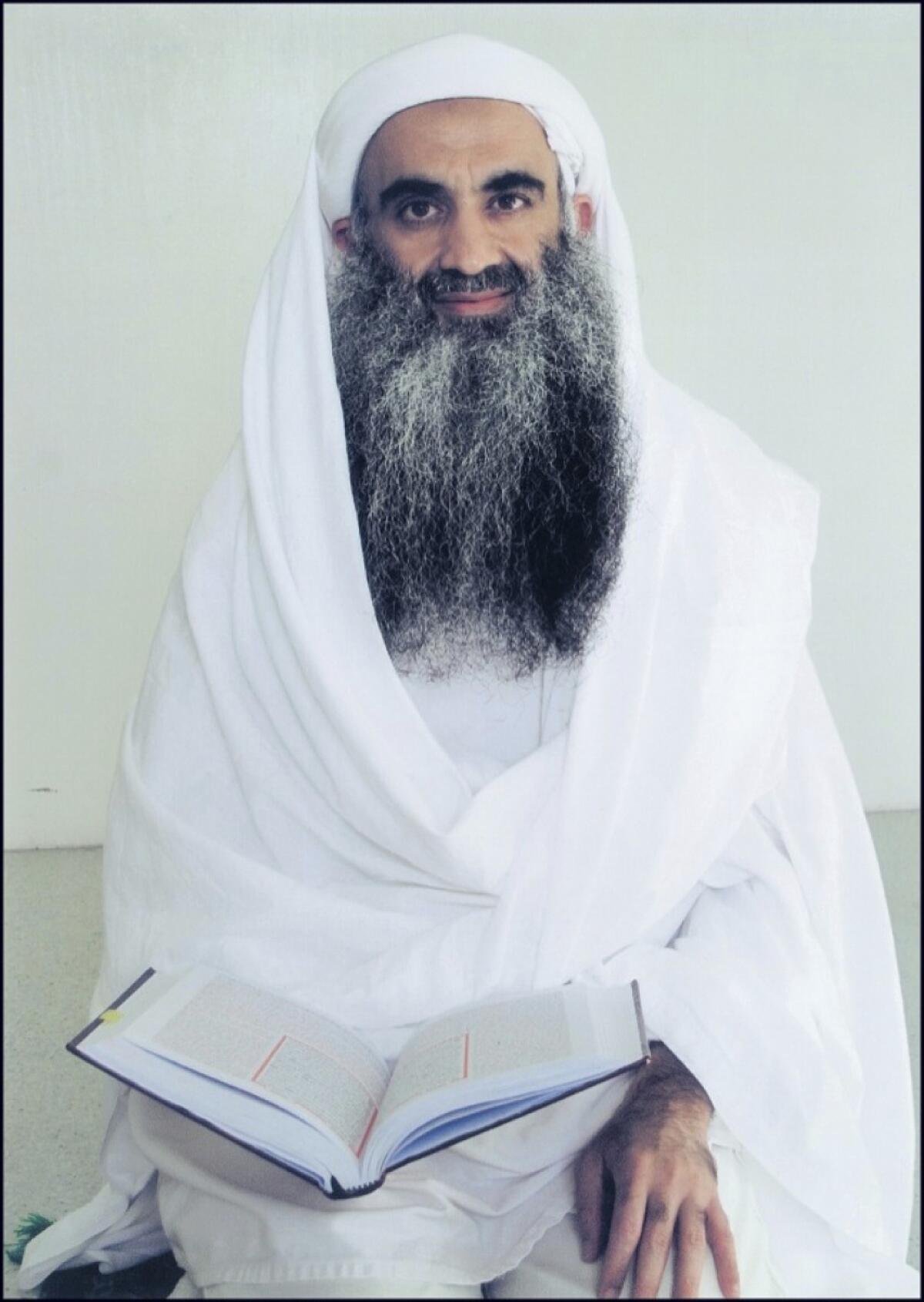
Chasing Mohammed was not at all like that.
Among other obstacles, there was the Million Mohammed Problem. Naming conventions being what they are, many Muslims have very similar or identical names. Finding traces of Mr. Mohammed in Karachi is like looking for Mr. Lee in Seoul. Not impossible, but a challenge.
When on the happy occasion I would find someone with information I could use, most refused to talk. They often refused several times, loudly and more than once with threats.
An Emirati prince dressed head to toe in Armani once gave me a telephone number for a phone registered in Bahrain. He wouldn’t tell me whose number it was, but said I would find it interesting. When I called it and identified myself, whoever was on the other end slammed his phone down. Again and again, no matter how many times I called.
I carried the phone number in my wallet for years before I actually went to Bahrain to find out whom it belonged to. I got off the plane and before leaving the airport stopped at a telephone company kiosk to buy a local SIM chip.
I asked the kid who sold me the chip if there was any way to find out who owned a particular number. Sure, he said. He looked up the number in his computer database, then read off the name — Zahed Shaikh Mohammed, Mohammed’s older brother. Bingo!
How would I find that guy? I asked. He looked back at the computer, wrote down the address and said, “It’s just up the road.” Five minutes on the ground, and I had a name and address I had been seeking for years. Now that’s reporting!
The man who waterboarded Khalid Shaikh Mohammed elicits a mixture of contempt and admiration, reflecting deep divisions over harsh interrogation tactics.
It turned out to be too good to be true. My local fixer abandoned me in the middle of nowhere — too dangerous, he said — and when I eventually found the house, Zahed screamed at me and threatened to sue for invasion of privacy.
On other occasions, I would persuade someone to be interviewed and they would proceed to lie vigorously for hours. So, to summarize: I couldn’t identify whom I wanted to talk to; when I identified them, I couldn’t find them; when I found them they wouldn’t talk; when they talked they lied. It was a low-yield enterprise.
In a decade, I would go around the world twice, once in each direction, chasing his trail. It was rarely a comfortable journey. I flew, I took trains, I got a speeding ticket on the German autobahn, which was not supposed to be possible. I walked and ran and rode rickety taxicabs down dusty roads, sometimes on the floor, a couple of times in the trunk.
Over time, fortune favored me, and I gradually accumulated information: a friend in Doha, a sister in Karachi, a teacher in Kuwait, an acolyte in Dubai, classmates in North Carolina, a teacher, a spy, a cop like Boogie.
In brief, the bits and pieces I and others found yielded this narrative.
Mohammed was born in 1965 and raised, the second youngest of eight children, in a Kuwaiti oil town on the road to Saudi Arabia. Many of the men who worked in the nearby oil fields and refineries were Pakistanis. Mohammed’s father, an Islamic scholar, had been recruited by the Kuwaiti government to be the imam of the mosque where the workers worshiped.
They were a religious family. An uncle ran another mosque. Another was a muezzin.
KSM’s father died when he was very young, and his brother Zahed became the head of the household. Zahed was a member of the Muslim Brotherhood, a political Islamist organization that sought to restore religion as a dominant force in a secularizing world. Khalid joined the cause.
When he came of age, the older brothers sent him to a small college in North Carolina where he learned English, then to a slightly larger college where he earned a degree in mechanical engineering.
The years in North Carolina were difficult. Locals weren’t welcoming, pulling fraternity pranks and calling the dozens of overseas Muslim students “Abbie Dabbies.” KSM developed a persistent scorn for America.
While he was away at school, his three brothers had all gone to Afghanistan to join the jihad against the Soviet Union. They were based in Peshawar, just across the Afghan border in Pakistan. KSM joined them in 1987.
At training camps nearby he studied with Abdullah Azzam, a founding father of modern jihad.
The next year, the Soviets, bleeding blood and money, began retreating. The U.S. had supported the war against the Russians with money and weapons. When the last Russian forces exited Afghanistan in 1989, the U.S. support ended, leaving a civil war behind.
Abed, the most devout of KSM’s brothers, was then killed in a senseless battle among the competing Afghan political parties. Around the same time, Azzam was killed by a car bomb. I’ve come to believe that this sense of loss — the U.S. abandonment, the deaths of Abed and Azzam — combined with the deep religiosity of his childhood and the politics of the Muslim Brotherhood to shape KSM.
As nearly as we can tell, KSM has done nothing since but conceive, plan and execute terrorist plots. He has admitted responsibility in full or part for 31 separate plots. He conspired to kill Americans, Pakistanis, Tunisians, Indonesians, Muslims, Christians and Jews, among many others.
He had a job as an engineer for a while and explored some business deals — exporting palm oil, importing frozen chicken parts — but these were always in service of his larger terrorism endeavors.
His record is shocking in its ferocity. There was a casual, feral quality to his plotting, as if blowing up buildings and airplanes full of people was a perfectly normal thing to do. He pitched plots like a door-to-door salesman hawking pots and pans.
Some attacks, Sept. 11 being the most notable, were years in the planning. Others were seemingly spur of the moment. He was a raconteur who had an affability that suggested he would make an excellent dinner companion. He flirted with women and charmed men.
He used this charm cold-bloodedly. Shortly after meeting a young Pakistan American, for example, he persuaded the man to take part in a suicide bombing at his own wedding.
It’s in this incarnation as a sort of Johnny Appleseed of terror that Mohammed’s character is most plainly in view. Unlike Osama bin Laden, who always seemed an aloof, distant presence, KSM thrived down in the muck of the everyday world. He was a family man — he has eight children, one of whom he has never seen — and loved Iranian dates. He argued over hotel bills and bragged of his importance.
He is multilingual, fluent in Arabic, Urdu, Baluchi and English, and moved easily through a globalizing world, changing identities as one might change shoes.
Frank Pellegrino, an FBI special agent who has chased Mohammed way longer than I have, said after meeting him in 2007 that if he weren’t one of the worst mass murderers in history, he’d be a good guy to grab a beer with.
Pellegrino met KSM here at Guantanamo, where he was sent after spending three years in the Central Intelligence Agency’s “black site” prisons. He was tortured in those prisons, including 183 waterboard episodes, to little apparent effect. Pellegrino was tasked with interviewing KSM and soliciting confessions. Mohammed and four other men have been charged with conspiring to kill almost 3,000 people who died in or as a result of the Sept. 11 attacks. The Pellegrino confession is a key part of the government case against KSM.
Defense attorneys for Mohammed and his co-defendants contend that the confessions should not be admissible in court because the torture renders them tarnished, the fruit of the poisoned tree, as they describe it.
When I first saw Mohammed in court, I was surprised by how small he was: 5-foot-4, just more than 100 pounds. One CIA report on him written shortly after he was captured in 2003 wondered whether he was too obese to endure harsh interrogation. He had lost 40 or 50 pounds.
I’ve returned to the war court several times as pretrial hearings drag into their ninth year. Mohammed is an engaged presence during hearings. He and his co-defendants sit in separate rows of tables, with Mohammed always in the front row, about 60 feet from the press gallery, where I sit behind a triple layer of glass.
You can view the proceedings in real time, but the audio feed to the gallery is delayed by 40 seconds. It’s disorienting. Reporters are assigned specific seats and, depending on the whims of the guards, can’t sit elsewhere without the guards calling the Pentagon to get permission. I’ve “watched” several hearings from behind a post.
The coming trial of Khalid Shaikh Mohammed before a military commission will focus not on what he did — orchestrate the deaths of 2,973 people — but on the torture inflicted on him as a result.
KSM’s behavior in court has sometimes been bizarre. Once, he stood during the proceedings to sing Quranic verses. He has a tiny, high-pitched voice that could belong to a 9-year-old. After the judge repeatedly told him that he was out of order and had to stop, he blurted “OK” and immediately quit, provoking laughter throughout the courtroom.
His co-defendants often look to Mohammed for guidance. When one of them, Ramzi Binalshibh, initially refused to appear before the war court at all, it was not military prosecutors or lawyers who changed his mind but Mohammed.
He dresses up for court, wearing elaborate Pashtun turbans with what appear to be tails on the backs. Sometimes the tail stands straight out, like a bird dog pointing. He often wears a camouflage jacket over Kuwaiti gowns or a Pakistani shalwar kameez.
He kibitzes with the other defendants and lawyers and more or less acts as though he owns the place. He has several times described himself as a soldier, once likening himself to George Washington.
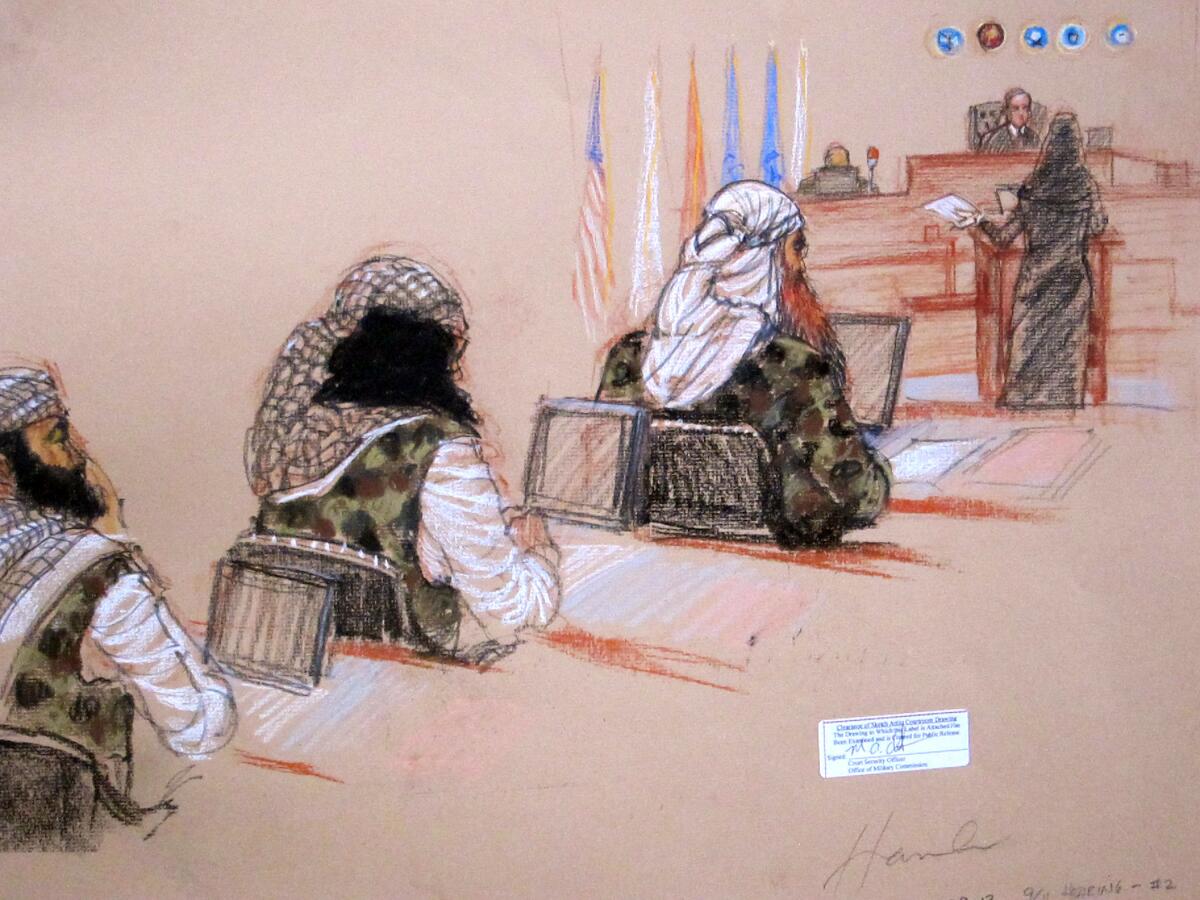
He’s vain. He complained once that a court sketch artist had given him too large a nose. Last fall, before court, he was sitting in his chair reading an old newspaper article I had written. In it, an intelligence officer commented that his agency knew little about Mohammed before Sept. 11.
We didn’t even know his name, the spy said. He must have had no ego at all. Mohammed thought this was the funniest thing ever and was reading it aloud to everybody who walked by.
Watching from the gallery recently, behind the smudged glass and my favorite post, my view of him is as ever imperfect. I lose sight of him entirely as lawyers and military guards move in and out of my line of vision, like prey moving through deep woods. After all this time, I still catch only glimpses of him, bright beard flashing, before he disappears again into the trees.
McDermott is a former Times staff writer who is the coauthor of “The Hunt for KSM: Inside the Pursuit and Takedown of the Real 9/11 Mastermind, Khalid Sheikh Mohammed.”
More to Read
Sign up for Essential California
The most important California stories and recommendations in your inbox every morning.
You may occasionally receive promotional content from the Los Angeles Times.
